Initiative to Broaden Farmer Knowledge through Video Receives Award
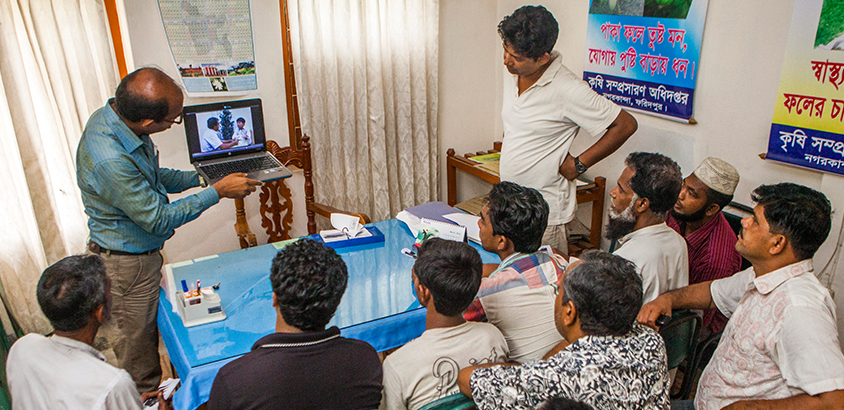 How can agricultural research organizations rapidly and effectively reach large numbers of farmers with messages on improving crop productivity? The overwhelming number of farmers in rural Bangladesh presents formidable challenges to turning research into impact through agricultural extension and farmer training. Through CSISA, the International Maize and Wheat Improvement Center (CIMMYT) in Bangladesh and Agricultural Advisory Society (AAS), an NGO, have worked to overcome this challenge through the use of rural village and television video screenings. This initiative was recently awarded the prestigious international Access Agriculture Award for the use of training videos for farmer outreach in 2015. The Video Outreach award is awarded each year to organizations that show exceptional and inspiring use of video to reach farmers and improve their livelihoods by supplying relevant and entertaining training messages in local languages.
How can agricultural research organizations rapidly and effectively reach large numbers of farmers with messages on improving crop productivity? The overwhelming number of farmers in rural Bangladesh presents formidable challenges to turning research into impact through agricultural extension and farmer training. Through CSISA, the International Maize and Wheat Improvement Center (CIMMYT) in Bangladesh and Agricultural Advisory Society (AAS), an NGO, have worked to overcome this challenge through the use of rural village and television video screenings. This initiative was recently awarded the prestigious international Access Agriculture Award for the use of training videos for farmer outreach in 2015. The Video Outreach award is awarded each year to organizations that show exceptional and inspiring use of video to reach farmers and improve their livelihoods by supplying relevant and entertaining training messages in local languages.
Between 2012 and 2014, CIMMYT-Bangladesh and AAS jointly organised 482 screenings of the Bangla language video ‘Save more, grow more, earn more’ that introduces farmers to the use of small-scale agricultural machinery, which can be attached to two-wheeled tractors for seeding and fertilizing crops in a way that saves fuel and labour, allowing farmers to profit more while reducing irrigation requirements.
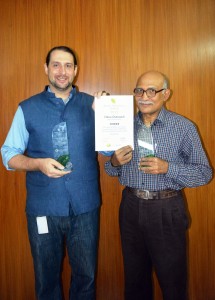
Timothy Krupnik and Harun-ar-Rashid with the Access Agriculture Video Outreach Award.
“Our goal was to create wide-scale farmer knowledge of, and demand for, innovative machinery appropriate for the small-scale of farmers’ fields in Bangladesh, while introducing technological options that could allow farmers to conserve important agricultural resources,” said Timothy J. Krupnik, CIMMYT Systems Agronomist. “And by strategically partnering with AAS, we overcame the problem of extension by scaling-up the video’s training messages through entertaining formats that farmers enjoy.”
Harun-Ar-Rashid, Executive Director of AAS said, “The purpose of the video screening organized by the volunteers was to create large-scale farmers awareness and motivation on mechanical planting of various crops through using community-based approaches and strategies along with the full participation of the relevant private sector players and our achievement has been enormous.”
Filmed and produced by Agro-Insight in consultation with CIMMYT and the Bangladesh Agricultural Research Institute, use of the video for farmer outreach was done as part of the USAID- and Bill & Melinda Gates-funded Cereal Systems Initiative for South Asia (CSISA), with screenings held throughout Bangladesh’s Feed the Future zone. Locations included farmers’ fields, markets, schools, community centres, tea stalls and in total, over 110,000 farmers saw the videos in rural village showings.
‘Save more, grow more, earn more’ was also aired by the popular television program, Mati-O-Manush, on BTV 12 times, resulting in a documented viewership of 28 million people nationwide. An additional 3,000 DVDs were distributed by 20 groups of volunteer organizations, including the Department of Agricultural Extension, the Bangladesh Agricultural Research Council, and local NGO and CBOs, who independently organized screenings. Follow-up research indicating each volunteer reached 180 people each. Similar organizations were engaged by AAS to facilitate additional volunteer showings in 332 communities in 11 districts across south-west Bangladesh. These efforts were documented in a scientific research paper, published in the international peer-reviewed Journal of Agricultural Education and Extension, that analyzed the effectiveness of volunteer groups to distribute videos to larger audiences of farmers.
The award was declared and handed over to the recipient organizations on 12 November in Nairobi, Kenya, in Eastern Africa. To watch the Access Agriculture Video Award Ceremony online, click here.
This article is authored by Mohammad Shahidul Haque Khan, Communications Officer, CIMMYT Bangladesh.
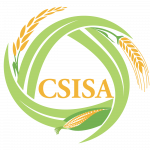
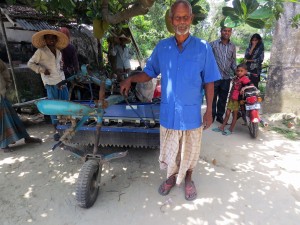
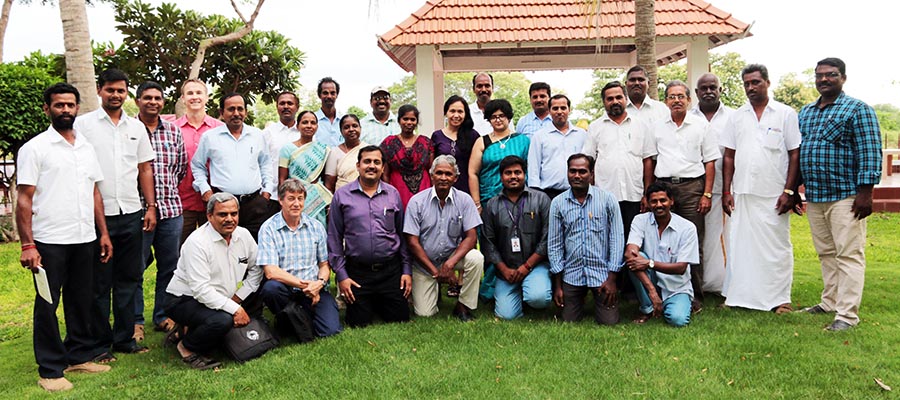 In the last five years, CSISA has reached over 25,000 farmers and has covered more than 70,000 acres through water- and labor-saving agricultural technologies in the South Indian state of Tamil Nadu, as reported during the CSISA Tamil Nadu Hub Celebration Workshop from 15-16 September in Thanjavur (participants of the workshop pictured above).
In the last five years, CSISA has reached over 25,000 farmers and has covered more than 70,000 acres through water- and labor-saving agricultural technologies in the South Indian state of Tamil Nadu, as reported during the CSISA Tamil Nadu Hub Celebration Workshop from 15-16 September in Thanjavur (participants of the workshop pictured above).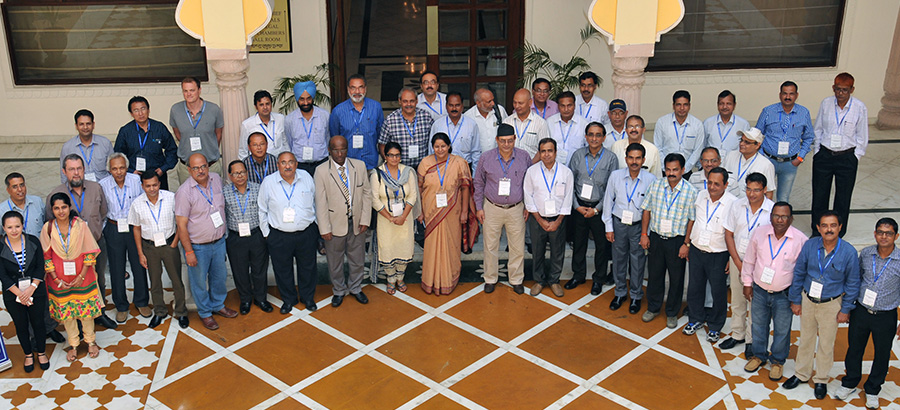 Over the past six years, wheat breeding for biotic and abiotic stress tolerance has gained momentum in South Asia through effective collaboration with national partners under the umbrella of CSISA, according to
Over the past six years, wheat breeding for biotic and abiotic stress tolerance has gained momentum in South Asia through effective collaboration with national partners under the umbrella of CSISA, according to 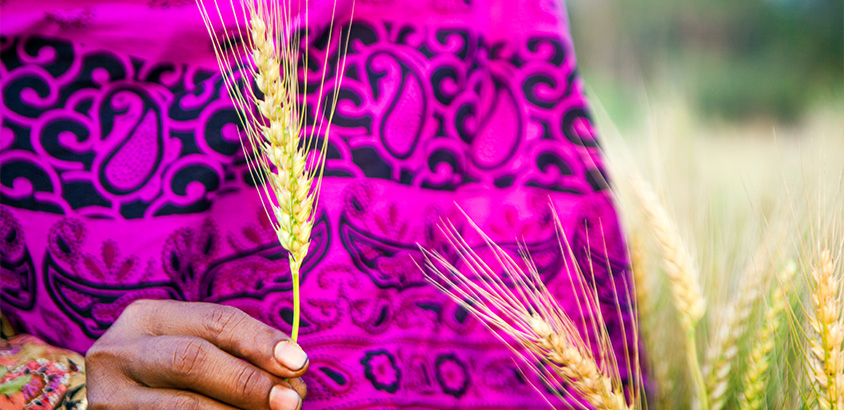 Enhancing the productivity of the rice-wheat cropping systems in the Indo-Gangetic Plains is essential for ensuring food security for more than 20 percent of the world’s population. Such enhancement is particularly important in the relatively impoverished and food insecure regions of eastern India, Nepal and Bangladesh.
Enhancing the productivity of the rice-wheat cropping systems in the Indo-Gangetic Plains is essential for ensuring food security for more than 20 percent of the world’s population. Such enhancement is particularly important in the relatively impoverished and food insecure regions of eastern India, Nepal and Bangladesh.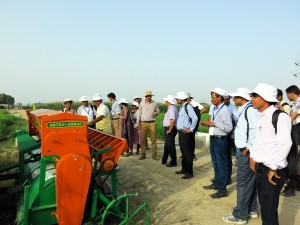
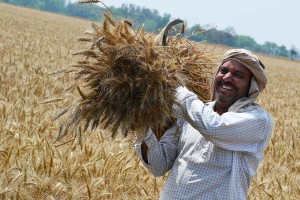 In a
In a 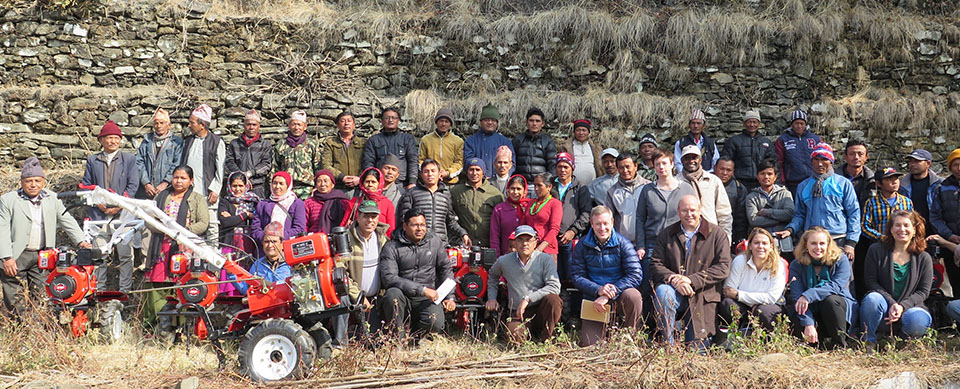
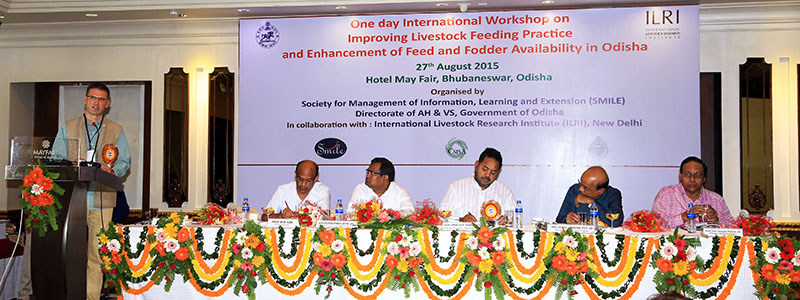
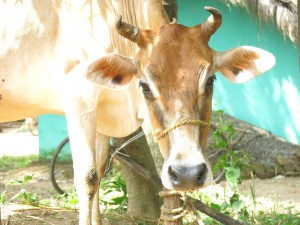 Farming is the main source of income in Amdubi village of Odisha’s Mayurbhanj district and livestock plays a major role. But feeding livestock can be challenging since the plots of land are small as well steep and mostly devoted to growing rice, maize and vegetables. The cattle are fed at home until after harvesting when they are allowed to feed on the remaining straw in the rice fields. Since they lack the resources to regularly purchase feed from the market, most farmers have to resort to feeding their livestock with broken rice and bran produced at home. Although farmers of this village grow maize, they never feed maize stover to animals.
Farming is the main source of income in Amdubi village of Odisha’s Mayurbhanj district and livestock plays a major role. But feeding livestock can be challenging since the plots of land are small as well steep and mostly devoted to growing rice, maize and vegetables. The cattle are fed at home until after harvesting when they are allowed to feed on the remaining straw in the rice fields. Since they lack the resources to regularly purchase feed from the market, most farmers have to resort to feeding their livestock with broken rice and bran produced at home. Although farmers of this village grow maize, they never feed maize stover to animals.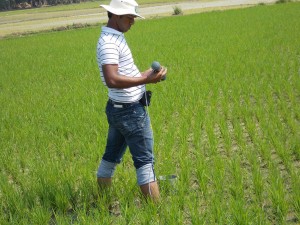
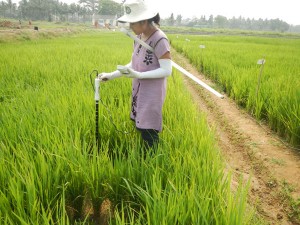
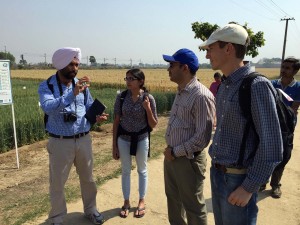
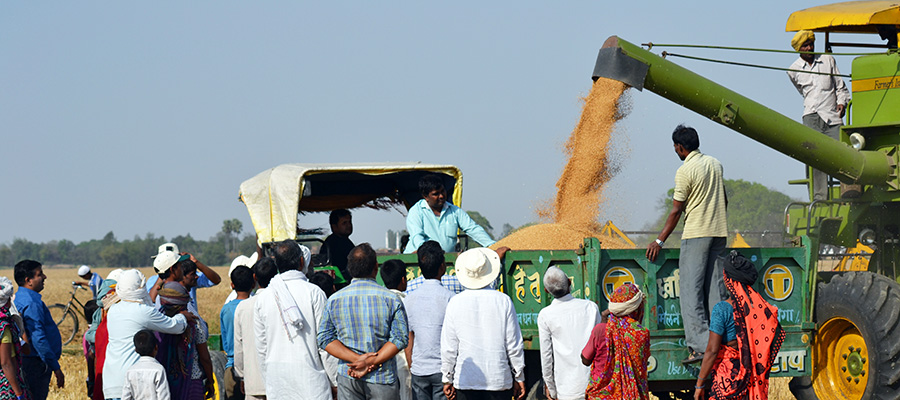 Based on studies conducted by CSISA in Bihar and eastern Uttar Pradesh, early sowing of wheat – between 1 and 15 November – in combination with zero tillage and improved wheat varieties can help combat the negative impacts of terminal heat during the wheat maturing stage and increase yields. To demonstrate the benefits of early wheat sowing, CSISA in collaboration with the Bihar and Uttar Pradesh Departments of Agriculture organized public wheat harvesting events this year in Buxar and Sant Kabir Nagar districts, respectively.
Based on studies conducted by CSISA in Bihar and eastern Uttar Pradesh, early sowing of wheat – between 1 and 15 November – in combination with zero tillage and improved wheat varieties can help combat the negative impacts of terminal heat during the wheat maturing stage and increase yields. To demonstrate the benefits of early wheat sowing, CSISA in collaboration with the Bihar and Uttar Pradesh Departments of Agriculture organized public wheat harvesting events this year in Buxar and Sant Kabir Nagar districts, respectively.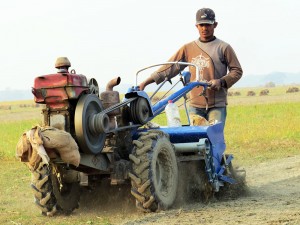
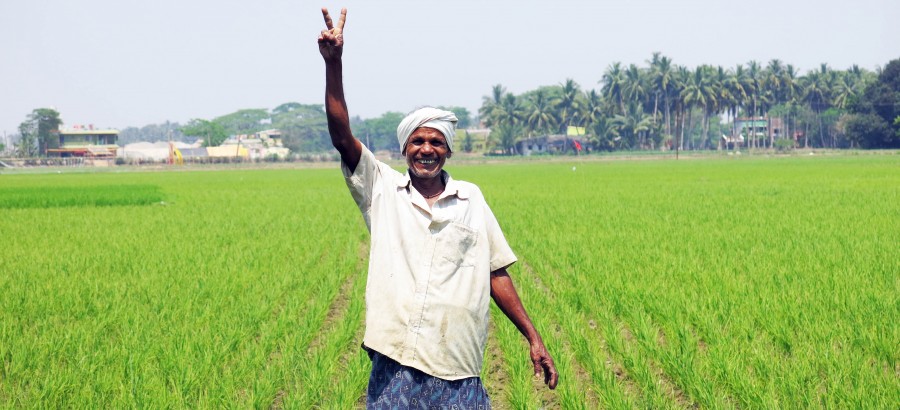
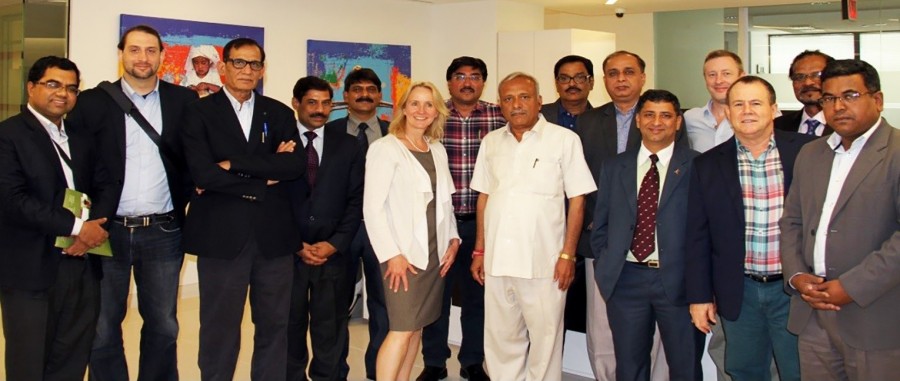 In June, CSISA led a 10-member delegation of senior officials from National Agriculture Research and Extension Systems (NARES) from Bangladesh, India and Nepal to Washington, DC for a meeting with the Modernizing Extension and Advisory Services (
In June, CSISA led a 10-member delegation of senior officials from National Agriculture Research and Extension Systems (NARES) from Bangladesh, India and Nepal to Washington, DC for a meeting with the Modernizing Extension and Advisory Services (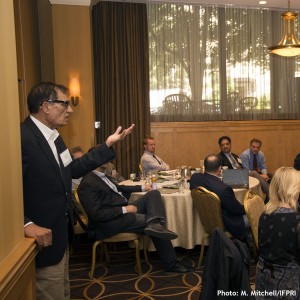 The organization and structure of extension systems, as well as the constraints to their functioning, and changes needed to create improved and market-focused extension services by Krishi Vigyan Kendras (agriculture science center) in India and other extension agencies in South Asia
The organization and structure of extension systems, as well as the constraints to their functioning, and changes needed to create improved and market-focused extension services by Krishi Vigyan Kendras (agriculture science center) in India and other extension agencies in South Asia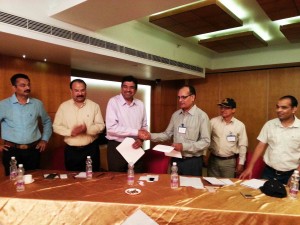 A Memorandum of Understanding (MoU) was signed between the National Seed Association of India (NSAI) and Seed Entrepreneurs Association of Nepal (SEAN) on 3 June 2015, to foster better future collaboration between seed companies from both countries, during visit of Nepalese seed entrepreneurs’ delegation to India.
A Memorandum of Understanding (MoU) was signed between the National Seed Association of India (NSAI) and Seed Entrepreneurs Association of Nepal (SEAN) on 3 June 2015, to foster better future collaboration between seed companies from both countries, during visit of Nepalese seed entrepreneurs’ delegation to India.
 Last month, several rounds of focus group discussions (FGDs) and plenary exercises were carried out with various stakeholders of CSISA’s gender program in Odisha and Bihar. The participatory evaluation was aimed at providing documentary evidence of community feedback on the technologies and model of partnership, prior to any further planning and convergence.
Last month, several rounds of focus group discussions (FGDs) and plenary exercises were carried out with various stakeholders of CSISA’s gender program in Odisha and Bihar. The participatory evaluation was aimed at providing documentary evidence of community feedback on the technologies and model of partnership, prior to any further planning and convergence.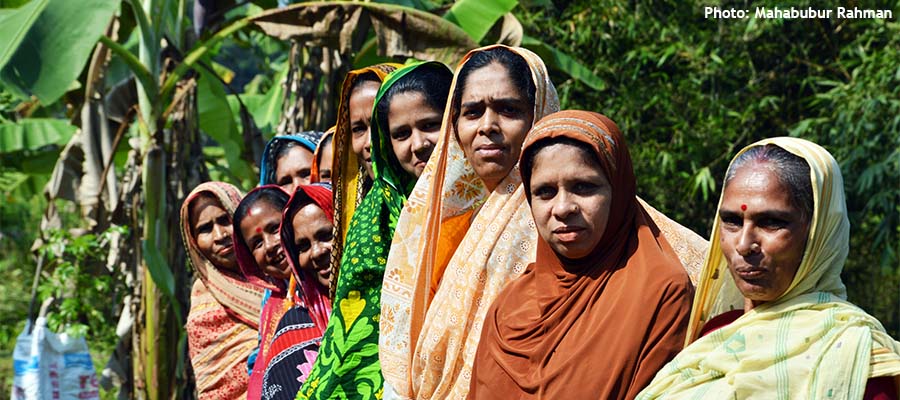 In Bangladesh, women usually do not work on agricultural tasks such as preparing seedbeds, transplanting seedlings, weeding and applying fertilizer. They do, however, manage approximately 80 percent of all postharvest activities. They also manage pond fish culture in their homestead area, a practice that has become increasingly popular. Nearly every household in southern Bangladesh today has a small pond, but few are optimally managed.
In Bangladesh, women usually do not work on agricultural tasks such as preparing seedbeds, transplanting seedlings, weeding and applying fertilizer. They do, however, manage approximately 80 percent of all postharvest activities. They also manage pond fish culture in their homestead area, a practice that has become increasingly popular. Nearly every household in southern Bangladesh today has a small pond, but few are optimally managed.
